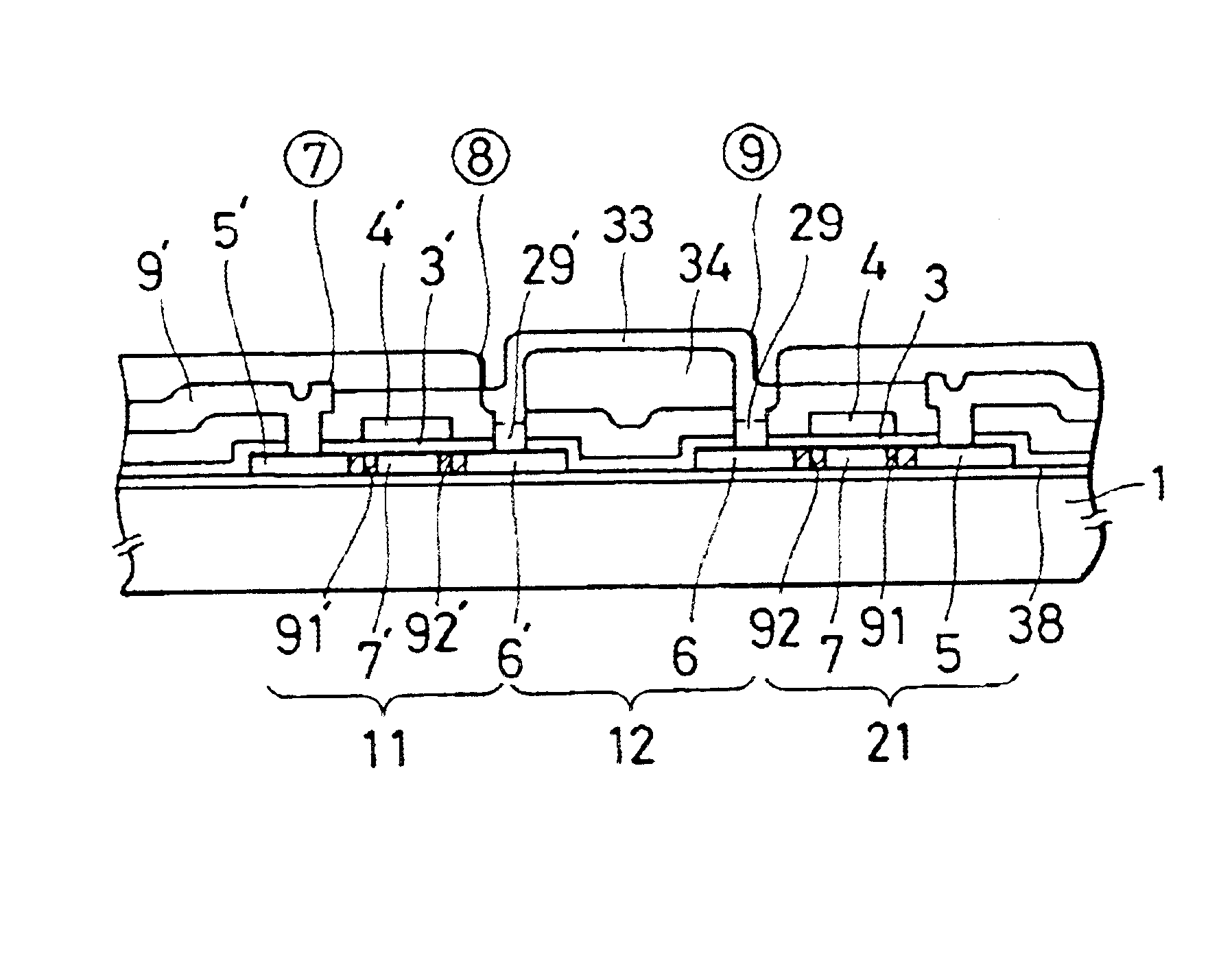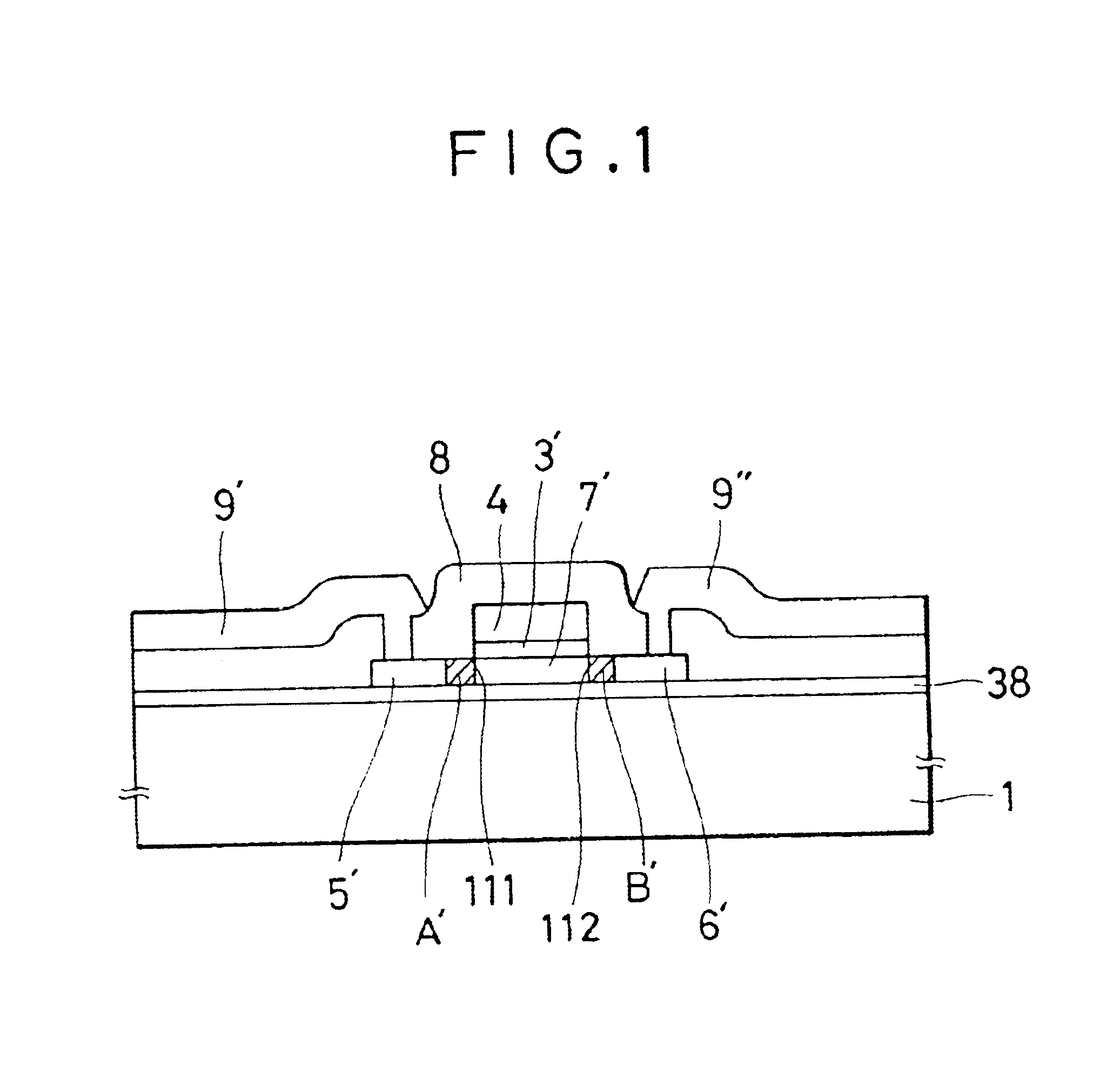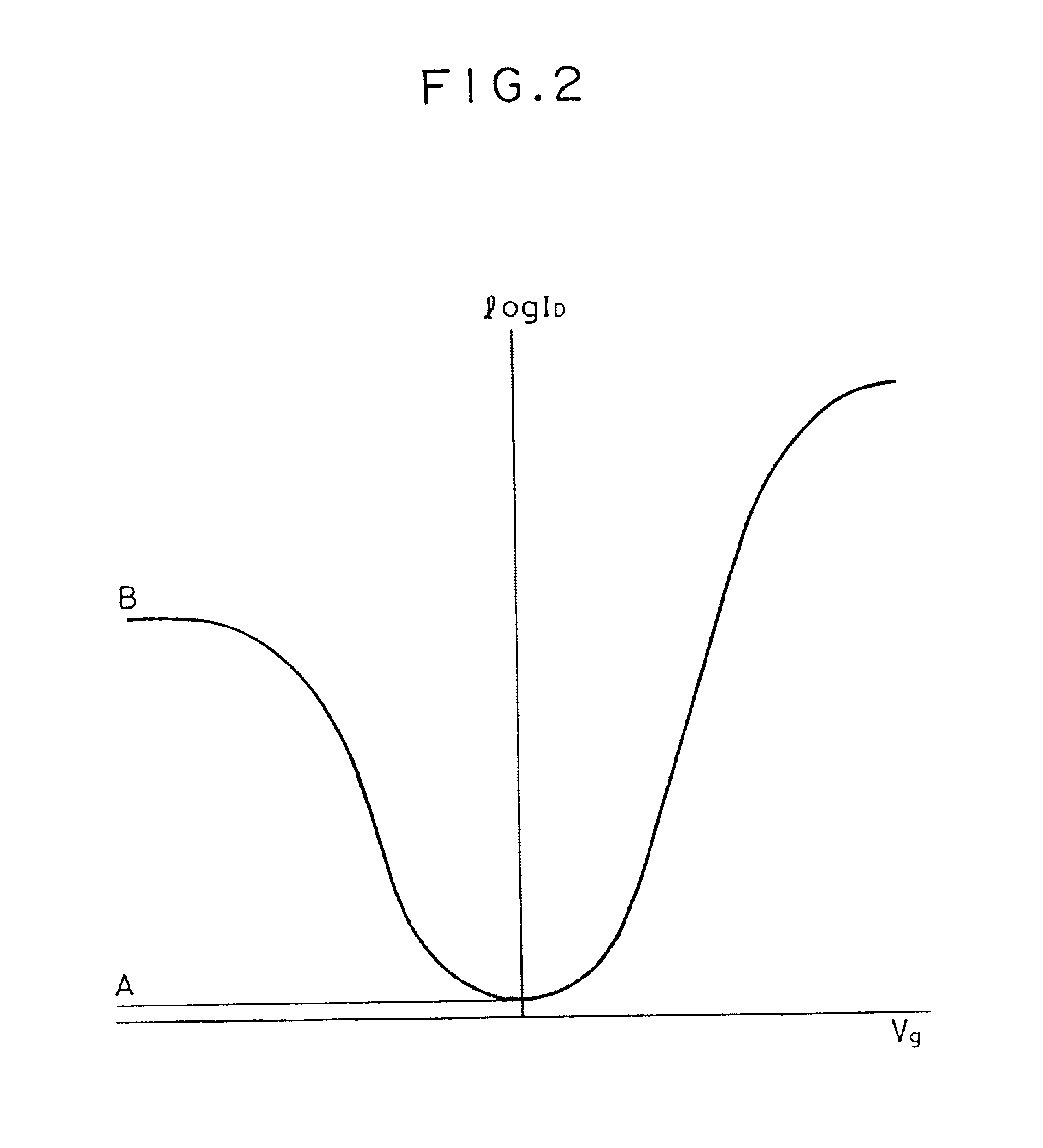Semiconductor device having source/channel or drain/channel boundary regions
a semiconductor device and drain technology, applied in the direction of semiconductor devices, electrical devices, transistors, etc., can solve the problems of poor drain voltage resistance, reverse current leakage from the drain to the source, and the insulated gate fet of the type above often suffers problems, so as to improve the voltage resistance
- Summary
- Abstract
- Description
- Claims
- Application Information
AI Technical Summary
Benefits of technology
Problems solved by technology
Method used
Image
Examples
example 1
[0058]This example provides a method for fabricating a semiconductor device on a substrate. According to the method, the patterning to form a gate electrode on a gate insulating film and the formation of an opening for adding therethrough at least one element selected from the group consisting of carbon, nitrogen, and oxygen are carried out at the same time. Then, the above element is added through the opening and the gate electrode is completed. By the above procedure, the region having added thereto at least one element selected from the group consisting of carbon, nitrogen, and oxygen is provided in the periphery of the semiconductor layer below the gate electrode, or between the semiconductor layer below the gate electrode and the source and drain.
[0059]Referring to FIG. 6, a process for fabricating a complementary TFT (C / TFT) pair is described. The C / TFT pair comprises an n-channel TFT and a p-channel TFT provided on a glass substrate at a complementary structure. The symbols o...
example 2
[0097]This example provides another method for fabricating a semiconductor device on a substrate. The method comprises the step of patterning a resist, semiconductor, insulator, or metal, or a complex thereof together with forming an opening for adding at least one element selected from the group consisting of carbon, nitrogen, and oxygen; and the step of adding at least one element selected from the group consisting of carbon, nitrogen, and oxygen. For example, it is used as a method for fabricating a C / TFT pair shown in FIG. 9(C). The difference between the process in EXAMPLE 1 and the present process is that the process of EXAMPLE 1 comprises a step of ion-doping the impurities such as carbon, nitrogen, and oxygen to the semiconductor layer 2 and 2′ using gate electrodes 4 and 4′ as well as the resist films thereon as the masks (see FIGS. 6 (B) and 6 (C)), whereas the process of the present EXAMPLE comprises ion-doping first the impurities such as carbon, nitrogen, and oxygen to ...
example 3
[0106]Referring to FIG. 25, a TFT similar to that fabricated in EXAMPLE 2 is described, only that the TFT of the present EXAMPLE comprises the impurity regions at the vicinity of the surface of the semiconductor layer. The structure thus obtained also is increased in the voltage resistance between the source and the drain. Those impurities, of course, may be present deep inside the semiconductor layer to the vicinity of the substrate, but the structure of the present EXAMPLE is advantageous in that the impurities such as carbon, nitrogen, and oxygen can be doped with a lower ion energy as compared with the processes of EXAMPLES 1 and 2. Furthermore, ion intrusion to undesired areas can be avoided. In the FIGURE, the numerals and the symbols are the same as those used in FIG. 1. Both a p-channel type and a n-channel type naturally can be used as the insulated gate FET described herein.
[0107]An insulated gate FET was thus fabricated by following the same process as described in EXAMPL...
PUM
 Login to View More
Login to View More Abstract
Description
Claims
Application Information
 Login to View More
Login to View More - R&D
- Intellectual Property
- Life Sciences
- Materials
- Tech Scout
- Unparalleled Data Quality
- Higher Quality Content
- 60% Fewer Hallucinations
Browse by: Latest US Patents, China's latest patents, Technical Efficacy Thesaurus, Application Domain, Technology Topic, Popular Technical Reports.
© 2025 PatSnap. All rights reserved.Legal|Privacy policy|Modern Slavery Act Transparency Statement|Sitemap|About US| Contact US: help@patsnap.com



